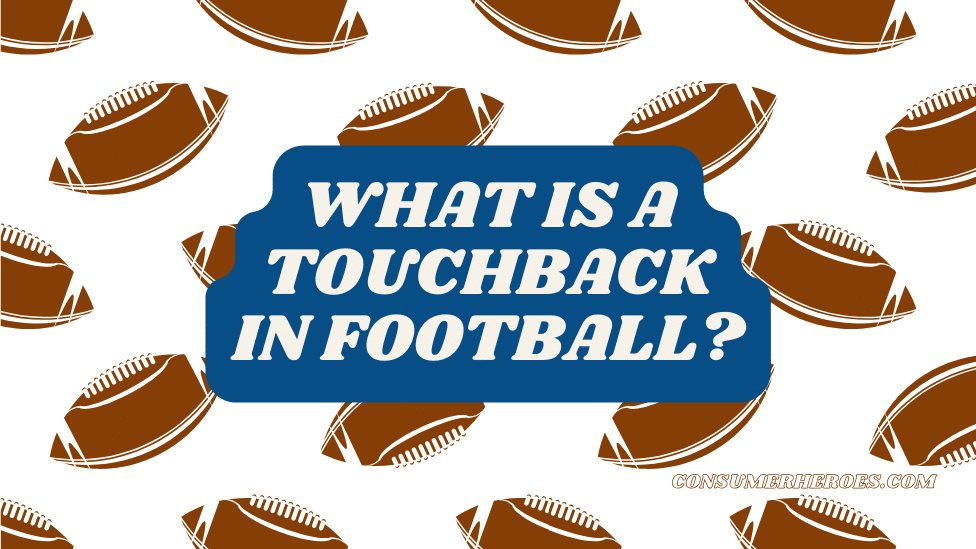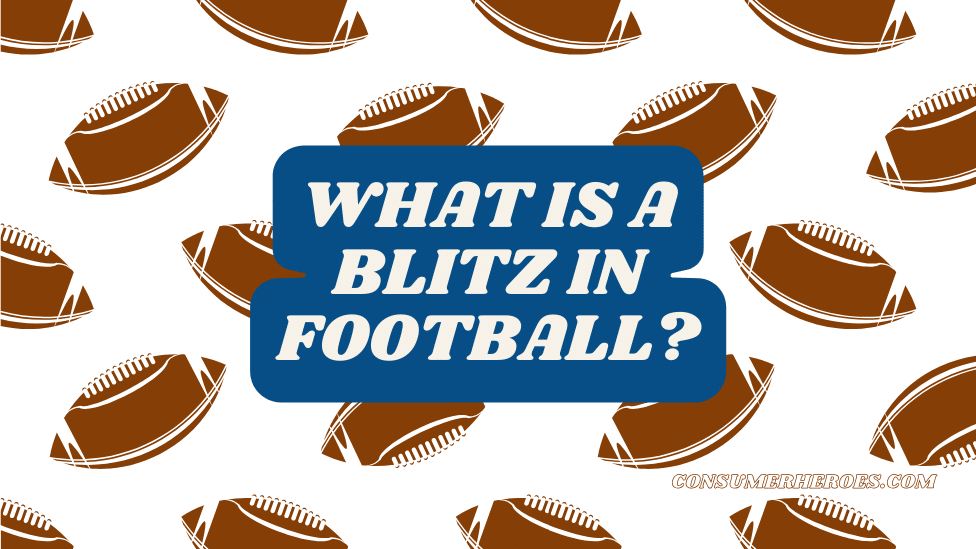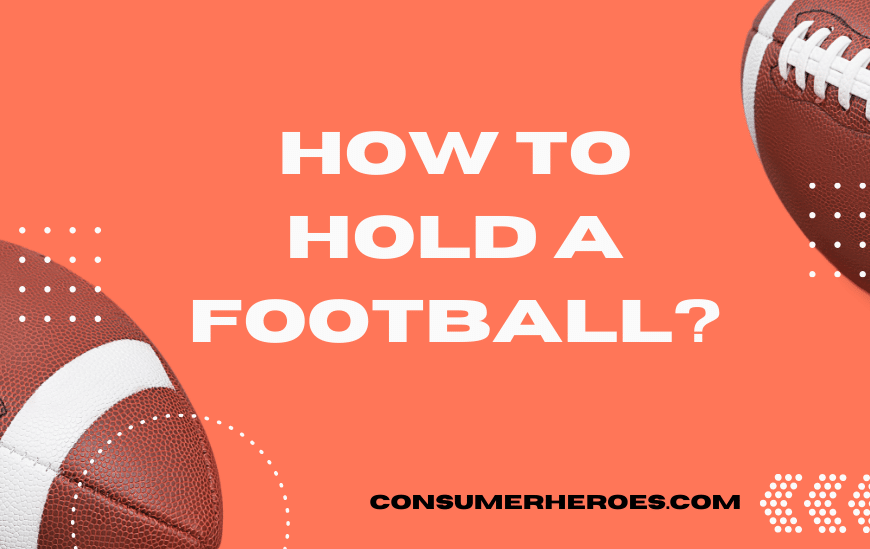A touchback is a term used in American football to describe a specific play that occurs when the ball is kicked into the endzone by the opposing team. When this happens, the receiving team has a choice to either run the ball out of the endzone or take a knee, which results in a touchback.
A touchback is a beneficial play for the receiving team because it allows them to start their offensive drive at the 25-yard line, rather than where the ball was caught in the endzone. However, if the ball is kicked out of bounds before it reaches the endzone, the receiving team is awarded the ball at the 40-yard line.
Understanding what a touchback is and how it affects the game is important for both players and fans alike. Knowing the rules and strategies of the game can help improve overall gameplay and enjoyment.
What Is a Touchback?
In football, a touchback occurs when the ball is kicked or punted into the end zone and is downed by the receiving team, or when the ball carrier is tackled in the end zone. When a touchback occurs, the ball is placed on the 20-yard line, and the receiving team starts their drive from there.
A touchback can occur in several different situations. If a kickoff or punt goes into the end zone and the receiving team chooses not to return it, the ball is considered dead, and a touchback is awarded. Similarly, if a player catches a kickoff or punt in the end zone and takes a knee, the ball is considered dead, and a touchback is awarded.
A touchback can also occur during a play from scrimmage. If a ball carrier is tackled in the end zone, or if the ball goes out of bounds in the end zone, a touchback is awarded. Additionally, if a player fumbles the ball and it goes out of bounds in the end zone, a touchback is awarded.
Overall, a touchback is a common occurrence in football, and it can have a significant impact on the game. It gives the receiving team a chance to start their drive from a favorable field position, and it can also prevent the kicking team from scoring points.
Origin and History of Touchback
A touchback in football is a ruling that occurs when the ball is downed by the receiving team in their own end zone, or when the ball goes out of bounds in the end zone. This results in the ball being placed on the receiving team’s 20-yard line. The touchback rule has been a part of football since the early days of the sport.
The touchback rule was first introduced in American football in the late 19th century. At that time, if a player caught the ball in the end zone and did not advance it, the ball was considered dead at that spot. This meant that the team that caught the ball had to start their next possession from that spot, which often put them at a disadvantage.
To address this issue, the touchback rule was introduced. Under this rule, if a player caught the ball in the end zone and did not advance it, the ball was considered dead and the receiving team was awarded possession of the ball at their own 20-yard line. This gave the receiving team a better starting position for their next possession.
Over time, the touchback rule has been modified to include other scenarios. For example, if a player fumbles the ball out of bounds in the end zone, it is also considered a touchback and the receiving team is awarded possession at their own 20-yard line.
In addition to being a part of American football, the touchback rule is also used in Canadian football and rugby. While the specifics of the rule may vary slightly between these sports, the general concept remains the same.
Rules Governing Touchbacks
NFL Rules
In the NFL, a touchback happens when the ball is kicked into the end zone and the receiving team fails to advance it out of the end zone. When this happens, the ball is placed on the 25-yard line, and the receiving team starts their drive from there. The following are the rules governing touchbacks in the NFL:
- A kickoff that goes out of bounds in the end zone without being touched by a player is considered a touchback.
- A kickoff that goes out of bounds before reaching the end zone is not considered a touchback.
- If a player catches the ball in the end zone and then takes a knee, it is a touchback.
- If a player catches the ball in the end zone and then steps out of bounds, it is a touchback.
- If the ball is fumbled in the end zone and goes out of bounds, it is a touchback.
College Football Rules
In college football, the rules governing touchbacks are slightly different. A touchback occurs when the ball is downed by the receiving team in their own end zone or goes out of bounds in the end zone. The following are the rules governing touchbacks in college football:
- A kickoff that goes out of bounds in the end zone without being touched by a player is considered a touchback.
- A kickoff that goes out of bounds before reaching the end zone is not considered a touchback.
- If a player catches the ball in the end zone and then takes a knee, it is a touchback.
- If a player catches the ball in the end zone and then steps out of bounds, it is considered a touchback only if the ball was kicked by the opposing team.
- If the ball is fumbled in the end zone and goes out of bounds, it is a touchback.
In conclusion, touchbacks are an important part of football that can affect the outcome of a game. Understanding the rules governing touchbacks is essential for both players and fans alike.
Scenarios Resulting in a Touchback
Kickoffs and Punts
A touchback in football can occur during kickoffs and punts when the ball is kicked into the end zone and the receiving team fails to return the ball out of the end zone. In this scenario, the ball is placed at the 25-yard line and possession is given to the receiving team.
If the kicking team is responsible for the ball going into the end zone, the receiving team is awarded a touchback and the ball is placed at the 25-yard line. However, if the ball is kicked out of bounds before it reaches the end zone, the receiving team is awarded the ball at the 40-yard line.
Fumbles and Interceptions
A touchback can also occur during fumbles and interceptions. If a player fumbles the ball and it goes out of bounds in the end zone, or if an interception is made and the ball is downed in the end zone, a touchback is awarded. In this scenario, the ball is placed at the 20-yard line and possession is given to the team that was on defense.
It is important to note that if a player fumbles the ball and it goes out of bounds before reaching the end zone, the ball is placed at the spot where it went out of bounds. Similarly, if an interception is made and the ball is downed before reaching the end zone, the ball is placed at the spot where it was downed.
In conclusion, a touchback can occur in various scenarios during a football game. Understanding the rules and regulations surrounding a touchback can help players and fans alike better understand the game.
Strategies and Tactics
Teams will often use different strategies and tactics when it comes to touchbacks in football. Here are a few examples:
- Kickoff Placement: The kicker can try to place the ball in a certain area of the end zone to make it more difficult for the returner to bring it out. If the ball is kicked to the corner of the end zone, it can force the returner to run a longer distance and potentially give the kicking team more time to get downfield and make the tackle.
- Directional Kicking: Similar to kickoff placement, directional kicking can be used to force the returner to run a certain way. For example, the kicker may aim for the left side of the end zone, hoping to force the returner to run to the right where the coverage team is waiting.
- Squib Kicks: A squib kick is a low, bouncing kick that is difficult for the returner to handle cleanly. This can be used to prevent the returner from getting a good runback and potentially causing a turnover.
- High Kickoffs: A high kickoff can give the coverage team more time to get downfield and make the tackle. It can also force the returner to fair catch the ball, which means they cannot advance it and the ball is placed at the spot of the catch.
Overall, the strategy for the kicking team is to prevent the returner from gaining too much yardage and potentially scoring a touchdown. The return team, on the other hand, will try to take advantage of any mistakes by the kicking team and gain as much yardage as possible.
Controversies and Notable Instances
Touchbacks have been a subject of controversy in football due to the ambiguity of the rules and the potential for errors by officials. Here are some notable instances:
- In the 2015 NFC Divisional Playoff game between the Green Bay Packers and the Dallas Cowboys, controversy arose when a kickoff was ruled a touchback despite appearing to be downed by the Packers inside the 1-yard line. The call was upheld after review, and the Packers lost the game by a score of 26-21.
- In a 2017 game between the New York Jets and New England Patriots, Jets tight end Austin Seferian-Jenkins appeared to score a touchdown, but the play was reviewed and ruled a touchback after it was determined that he lost control of the ball before crossing the goal line. The call was heavily criticized, with many arguing that Seferian-Jenkins had regained control before going out of bounds.
- In a 2020 game between the Cleveland Browns and the Cincinnati Bengals, Browns wide receiver Donovan Peoples-Jones appeared to down a punt at the Bengals’ 1-yard line, but the officials ruled it a touchback. After review, the call was upheld, but many fans and analysts believed that Peoples-Jones had clearly downed the ball before it crossed the goal line.
These instances highlight the importance of clear and consistent officiating in determining touchbacks, as well as the potential for controversy and debate even with the use of instant replay.
Conclusion
In conclusion, a touchback in football is a situation where the ball is kicked or punted by the opposing team into the end zone of the receiving team, and the receiving team chooses not to advance the ball out of the end zone. The result is that the ball is placed at the 25-yard line for the receiving team to start their offensive drive.
Touchbacks can occur in various situations, including kickoffs, punts, and interceptions. They are often used strategically by the receiving team to avoid a potential turnover or loss of yardage.
It is important to note that touchbacks can also occur as a result of penalties or other rule infractions. For example, if a player on the receiving team touches the ball while it is in the end zone and then steps out of bounds, it is considered a touchback and the ball is placed at the 25-yard line.
Overall, understanding the rules and strategies surrounding touchbacks is crucial for both players and fans of football. By knowing when and how they can occur, teams can make informed decisions that can ultimately impact the outcome of the game.







